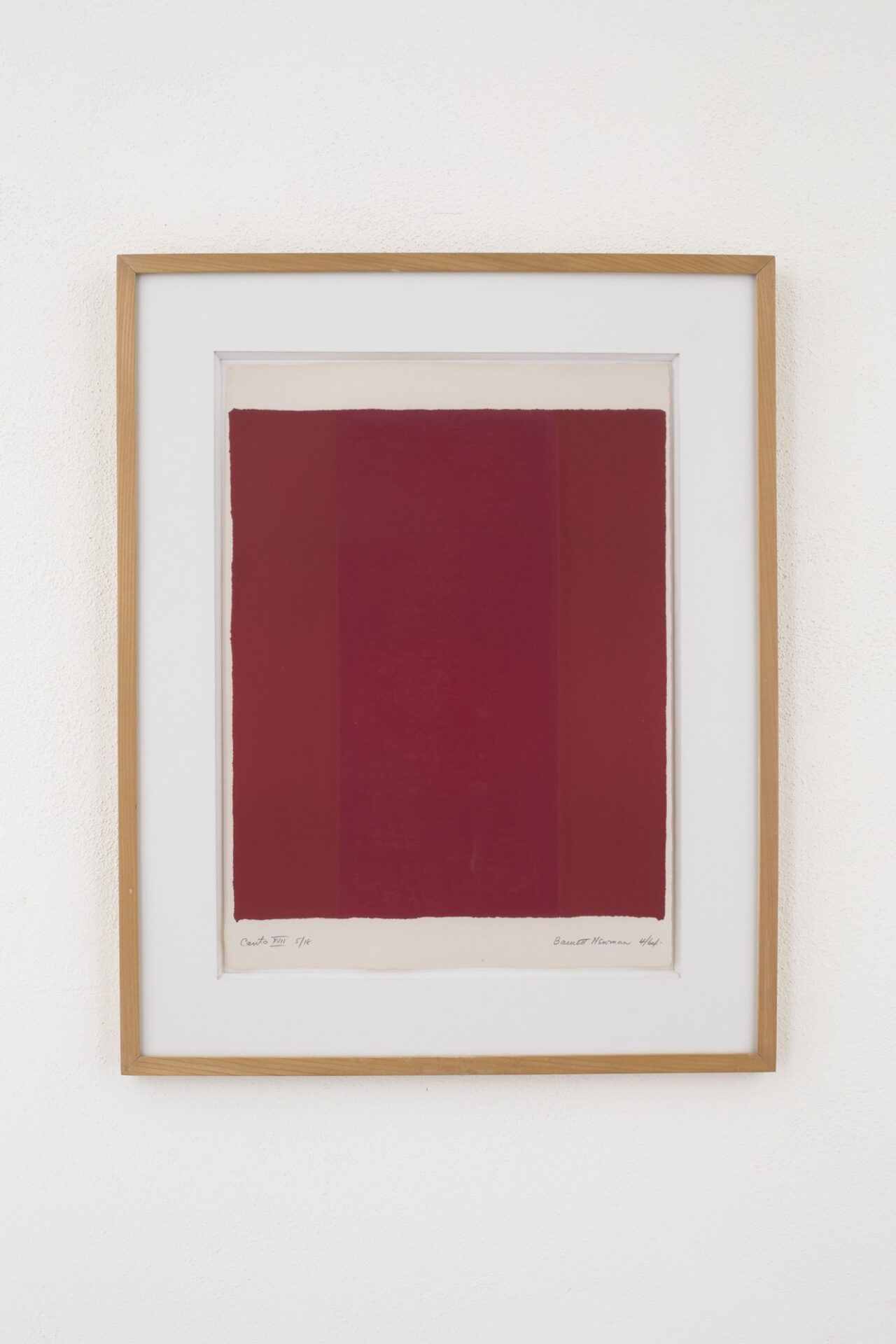Barnett Newman, born Baruch Newman in New York, studied at the Art Students League and had his first solo exhibition at Betty Parsons Gallery, New York, in 1948. In 1959, Donald Judd attended Newman’s exhibition at French & Company, New York, the largest exhibition of his work to date, with twenty-nine paintings. Meyer Schapiro, the influential art critic, historian, and professor, had asked all of his students at Columbia University, of which Judd was one, to attend the exhibition. Judd and Newman became friends at the end of 1964, around the time that Judd wrote his first essay on Newman’s work.
Newman’s 18 Cantos were produced by Universal Limited Art Editions in a restricted color palette of white, black, blue, yellow, green, and red. In his preface to this series, Newman wrote, “In painting, I try to transcend the size for the sake of scale. So here I was faced with the problem of having each imprint transcend not only its size but also the white frame to achieve this sense of scale. These eighteen cantos are then single, individual expressions, each with its unique difference. Yet since they grew one out of the other, they also form an organic whole—so that as they separate and as they join in their interplay, their symphonic mass lends additional clarity to each individual canto, and at the same time, each canto adds its song to the full chorus.”1 The series of eighteen was produced in an edition of eighteen, a sacred number in Jewish tradition, associated with the Hebrew word chai, meaning “alive.”
Judd installed another work by Newman in the Architecture Studio, an etching from 1968.
